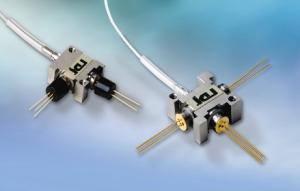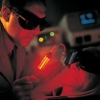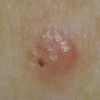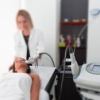Risultato terapeutico del trattamento del melasma con un laser a doppia lunghezza d'onda ( 511 e 578 nm) in pazienti fototipi III-V
 Gli studi recenti suggeriscono che le anomalie vascolari siano coinvolte nella patogenesi del melasma. Il laser al bromuro di rame (CuBr), che emette doppie lunghezze d'onda (511 e 578 nm) e consente la distruzione simultanea e selettiva delle cellule contenenti melanina e dei vasi sanguigni, può essere di beneficio nel trattamento di questa condizione.
Gli studi recenti suggeriscono che le anomalie vascolari siano coinvolte nella patogenesi del melasma. Il laser al bromuro di rame (CuBr), che emette doppie lunghezze d'onda (511 e 578 nm) e consente la distruzione simultanea e selettiva delle cellule contenenti melanina e dei vasi sanguigni, può essere di beneficio nel trattamento di questa condizione.
Obiettivo
Valutare l'efficacia e gli effetti avversi (AEs) del laser CuBr nel trattamento del melasma in pazienti con pelle del fototipo III-V.
Metodi
Abbiamo incluso nello studio 24 donne Tailandesi con melasma in modo che ricevessero sei trattamenti laser al CuBr, a 2 settimane di distanza l'uno dall'altro. Al basale sono state ottenute le valutazioni obiettive (misurazione del colore) e soggettive (valutazione clinica delle fotografie da parte di tre dermatologi all'oscuro dell'ordine delle fotografie), ma anche dopo tre e sei trattamenti, e alla visita di follow-up dopo 3 mesi. Per valutare i cambiamenti dei pazienti ad ogni visita, rispetto al basale, è stata utilizzata una scala analogica visiva (VAS); inoltre, ad ogni visita sono stati registrati gli AEs.
Risultati
Delle 24 pazienti, 20 hanno completato lo studio. In tutte le visite di follow-up, il valore medio dell'indice di melanina (IM) non ha mostrato alcun miglioramento statisticamente significativo rispetto alle misurazioni di base. Dopo 3 trattamenti si sono osservati dei miglioramenti significativi solo per quanto riguarda la valutazione clinica (P = 0.00); tuttavia, questa differenza non era già più visibile dopo sei trattamenti. Al follow-up di una settimana dopo la fine del ciclo completo di sei trattamenti, abbiamo registrato un miglioramento della VAS (P = 0.02), anche se non vi è stato alcun miglioramento in termini di valutazione clinica o di IM. Sono stati notati soltanto AEs lievi e transienti tra cui l'eritema, la sensazione di bruciore, la desquamazione, l'iperpigmentazione e le croste.
Conclusioni
Il laser al CuBr non è efficace nel migliorare il melasma di pazienti con fototipi III-V.
Storia della pubblicazione:
Titolo: Therapeutic outcome of melasma treatment by dual- wavelength (511 and 578 nm) laser in patients with skin phototypes III–V
Rivista: Clinical and Experimental Dermatology. doi: 10.1111/ced.12267
Autori: S. Eimpunth, R. Wanitphakdeedecha, D. Triwongwaranat, S. Varothai e W. Manuskiatti
Affiliazioni:Department of Dermatology, Faculty of Medicine Siriraj Hospital, Mahidol University, Bangkok, Thailand
Abstract:
Background Recent evidence suggests that vascular abnormalities are involved in the pathogenesis of melasma. Copper bromide (CuBr) laser, which emits dual wavelengths (511 and 578 nm), enabling simultaneous and selective destruction of melanin-containing cells and blood vessels, may be of benefit in the treatment of melasma. Aim To investigate the efficacy and adverse effects (AEs) of CuBr laser for melasma treatment in patients with skin phototypes III–V. Methods We enrolled 24 Thai women with melasma to receive six CuBr laser treatments, 2 weeks apart. Objective (colour measurement) and subjective (clinical evaluation of photographs by three dermatologists blinded to the order of the photographs) assessments were obtained at baseline, after three and six treatments, and at the 3-month follow-up visit. A visual analogue scale (VAS) was used for patient assessment of change at baseline, after six treatments and at the 3-month follow-up. AEs were recorded at every follow-up visit. Results Of the 24 patients, 20 completed the study. Mean melanin index (MI) showed no statistically significant improvement compared with baseline measurements at any of the follow-up visits. There were significant improvements in clinical evaluation after three treatments (P = 0.00); however, this difference was no longer visible after six treatments. At follow-up 1 week after the end of the full course of six treatments, there was an improvement in VAS (P = 0.02). However, there was no improvement as measured by clinical evaluation or MI. Mild, transient AEs including erythema, burning sensation, scaling, hyperpigmentation and crusting were noted. Conclusions CuBr laser did not show effectiveness in improving melasma in patients with skin phototypes III–V.





